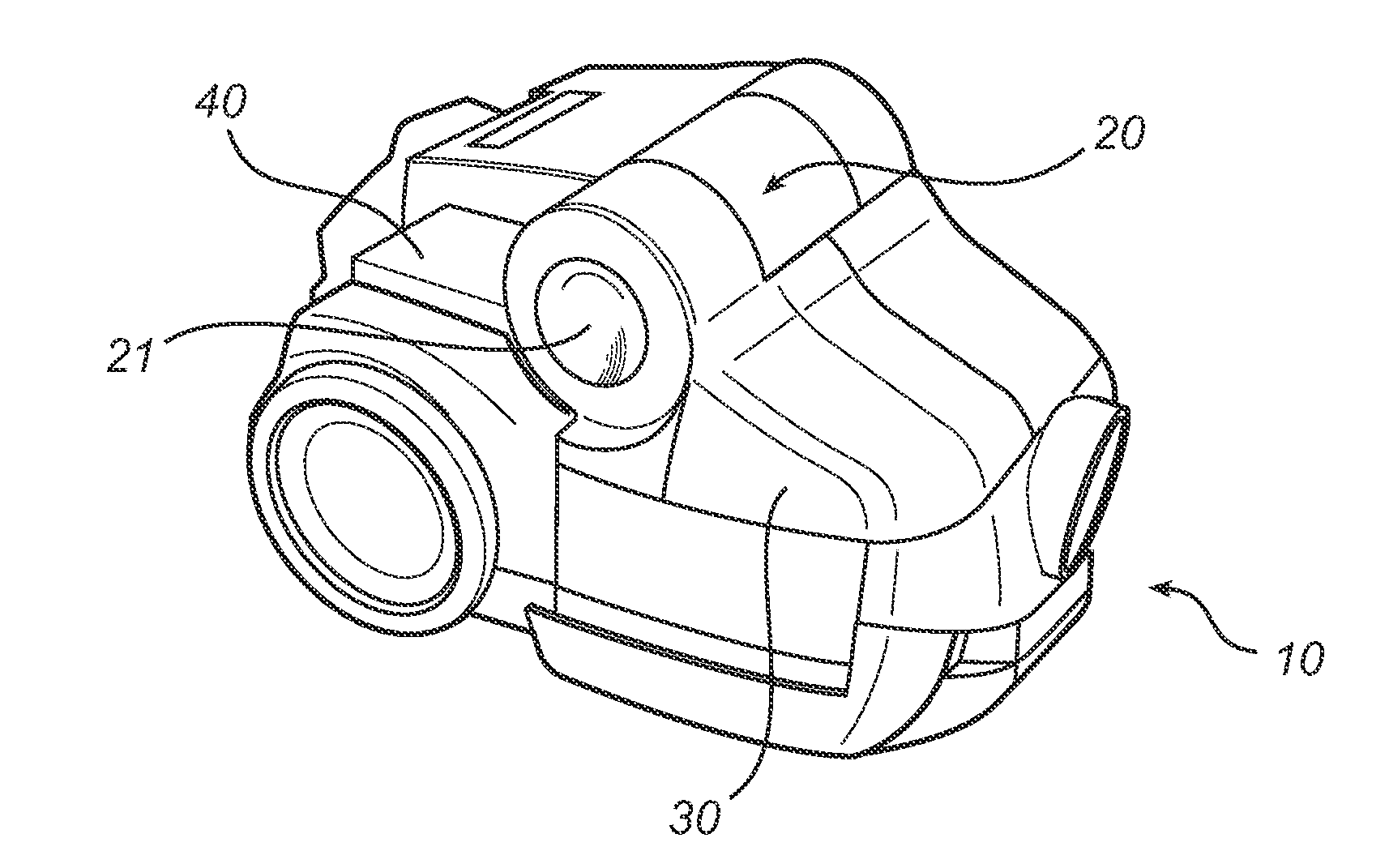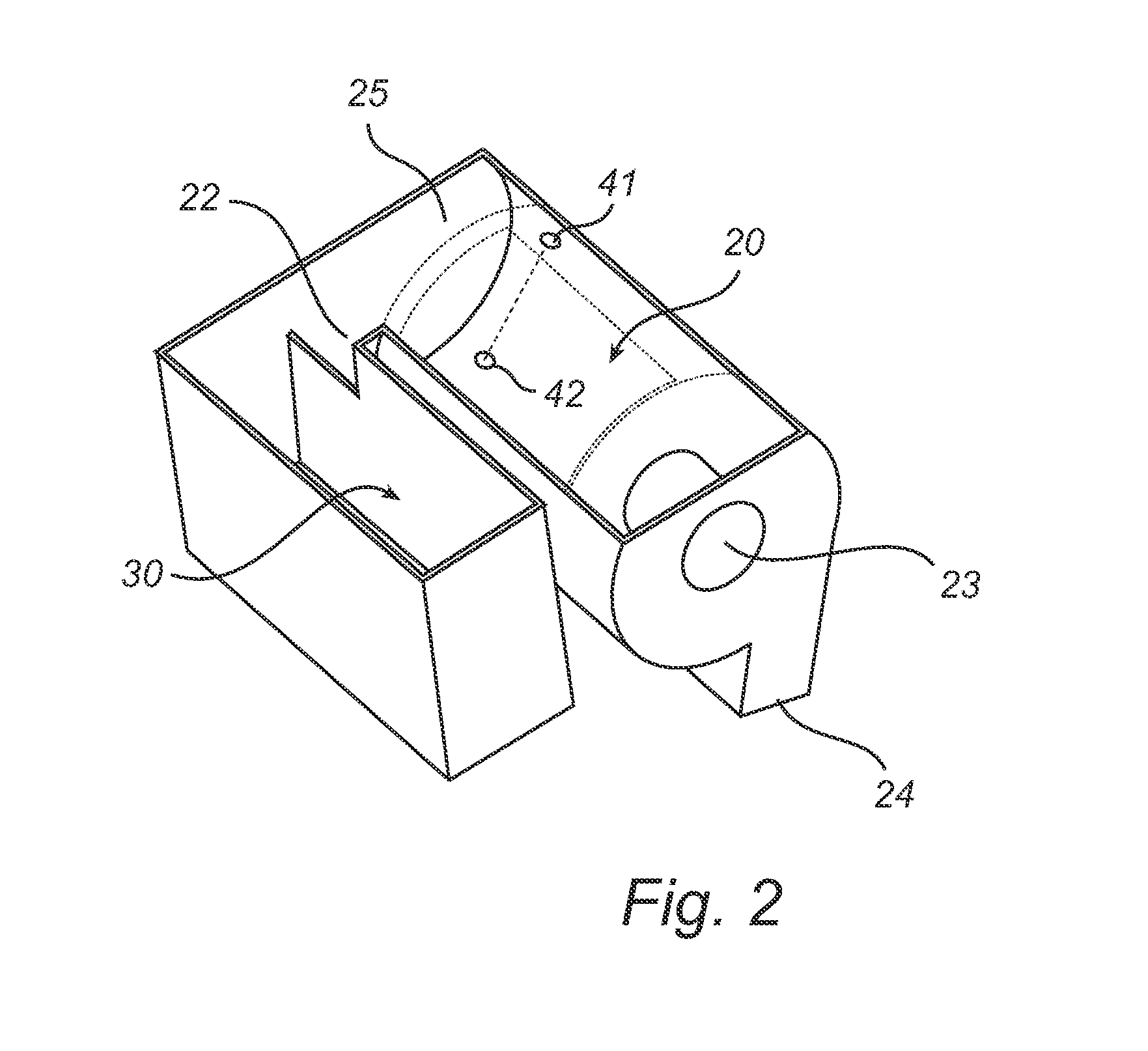Dust detection system
- Summary
- Abstract
- Description
- Claims
- Application Information
AI Technical Summary
Benefits of technology
Problems solved by technology
Method used
Image
Examples
Embodiment Construction
[0026]FIG. 1 illustrates a vacuum cleaner 10 of canister type which has a housing on which a dust separation chamber 20 of cyclone type is arranged. The dust separation chamber 20 is at its bottom connected to a dustbin 30 and a dust detector unit 40. The vacuum cleaner 10 typically comprises components such as a power unit, a vacuum source, a suction pipe, a floor nozzle etc. (not shown) for achieving the dust and dirt cleaning capability of the vacuum cleaner. However, because these dust and / or dirt sucking operation principles of the vacuum cleaner are not critical to the implementation of the present invention, detailed description thereof is omitted.
[0027]To continue, and with reference to FIG. 2, the dust separation chamber 20 is utilized to separate dust and dirt from a dust laden air stream typically entered into the vacuum cleaner via the floor nozzle and into the dust separation chamber 20 via an inlet 24. The dust separation chamber 20 is here substantially cylindrical, h...
PUM
 Login to View More
Login to View More Abstract
Description
Claims
Application Information
 Login to View More
Login to View More - R&D
- Intellectual Property
- Life Sciences
- Materials
- Tech Scout
- Unparalleled Data Quality
- Higher Quality Content
- 60% Fewer Hallucinations
Browse by: Latest US Patents, China's latest patents, Technical Efficacy Thesaurus, Application Domain, Technology Topic, Popular Technical Reports.
© 2025 PatSnap. All rights reserved.Legal|Privacy policy|Modern Slavery Act Transparency Statement|Sitemap|About US| Contact US: help@patsnap.com



